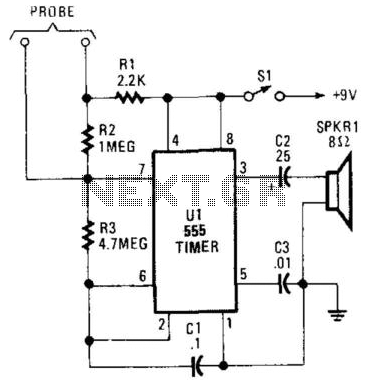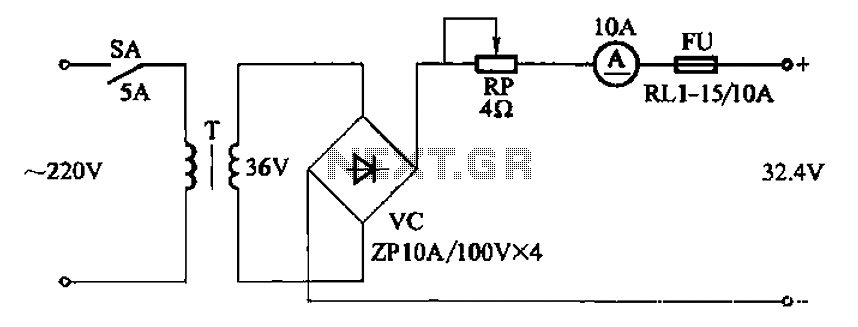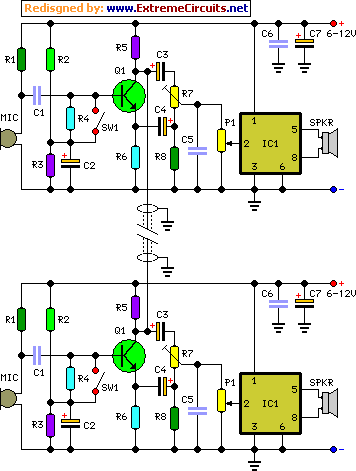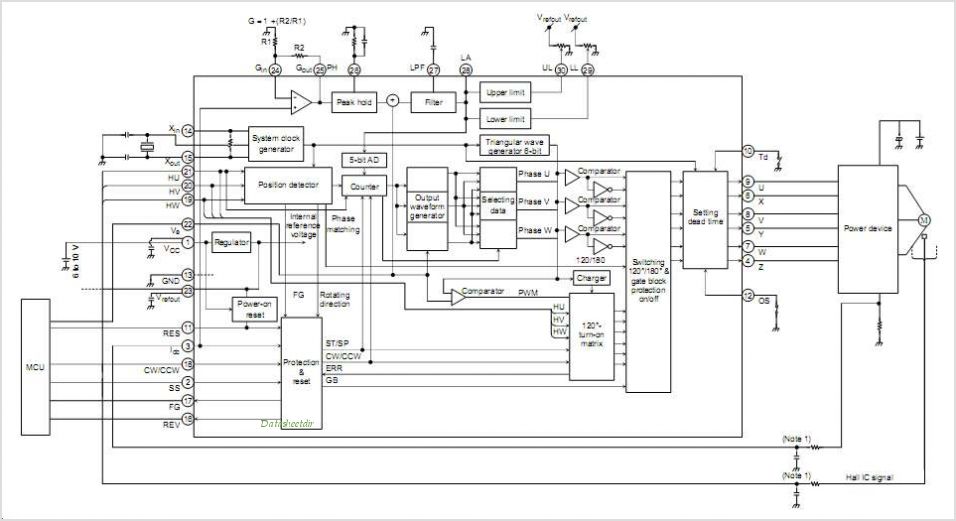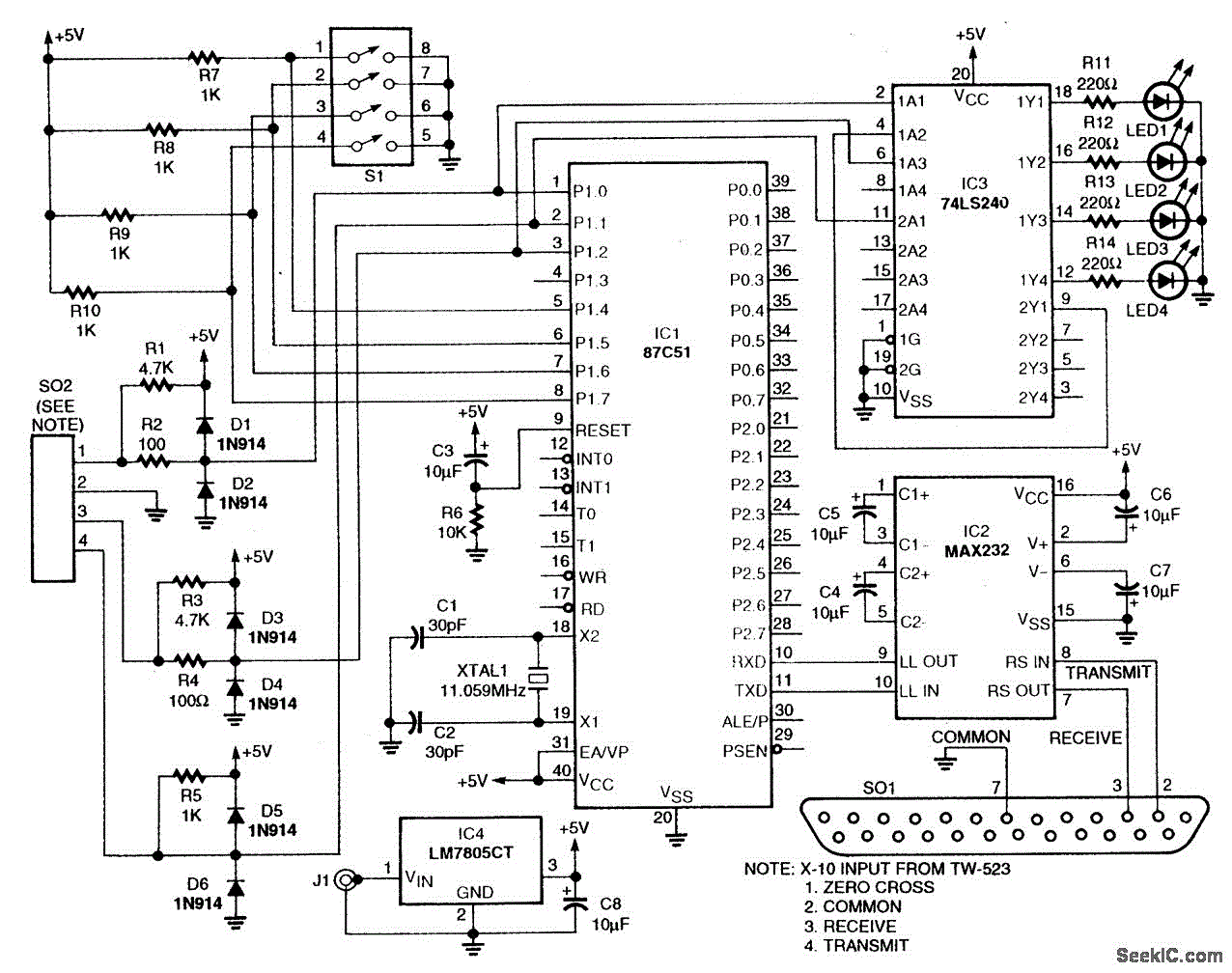
3 KILOBAUD FULL DUPLEX FSK MODEM
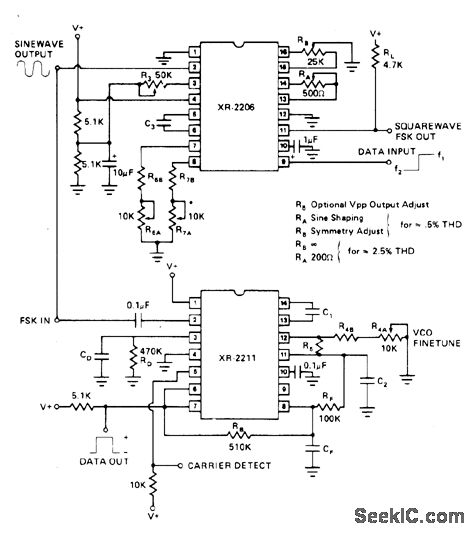
The values indicated are for a 13 kHz bandwidth, with 1070 Hz for the mark signal and 1270 Hz for the space signal. This utilizes the Exar XR-2206 function generator and the XR-2211 FSK demodulator. The report outlines the design procedure. The supply voltage can be less than 12 V as referenced in the "Phase-Locked Loop Data Book," Exar Integrated Systems, Sunnyvale, CA, 1978, pages 57 to 61.
The circuit described involves a frequency-shift keying (FSK) communication system that operates within a specified bandwidth of 13 kHz. The mark and space frequencies are set at 1070 Hz and 1270 Hz, respectively. This modulation scheme allows for the transmission of digital signals over an analog medium, making it suitable for various communication applications.
The Exar XR-2206 function generator is employed to produce the required frequency signals. This versatile component can generate sine, square, triangular, and sawtooth waveforms, ensuring that the output can be tailored to meet the specific requirements of the FSK modulation. The XR-2211 FSK demodulator, on the other hand, is responsible for decoding the modulated signals back into their original digital form. It effectively detects the frequency changes in the incoming signal, allowing for accurate data recovery.
The power supply for this circuit is designed to operate at voltages below 12 V, providing flexibility in terms of power source selection. This is particularly advantageous in portable or battery-operated applications where minimizing power consumption is critical.
The design procedure outlined in the report serves as a guide for engineers looking to implement similar systems. It likely encompasses component selection, circuit layout considerations, and calibration processes to ensure optimal performance of the FSK communication system. The reference to the "Phase-Locked Loop Data Book" indicates that additional theoretical background and practical examples are available for those interested in further exploring phase-locked loop technology and its applications in frequency modulation and demodulation.Values shown are for 13-kHz bandwidth 1070 Hz for mark and 1270 Hz for space, using Exar XR-2206 function generator and XR-2211 FSK de-modulator Report gives design procedure Supply can be ‹12 v "Phase-Locked Loop Data Book, "Exar Integrated Systems, Sunnyvale, CA, 1978, p 57 61. 🔗 External reference
The circuit described involves a frequency-shift keying (FSK) communication system that operates within a specified bandwidth of 13 kHz. The mark and space frequencies are set at 1070 Hz and 1270 Hz, respectively. This modulation scheme allows for the transmission of digital signals over an analog medium, making it suitable for various communication applications.
The Exar XR-2206 function generator is employed to produce the required frequency signals. This versatile component can generate sine, square, triangular, and sawtooth waveforms, ensuring that the output can be tailored to meet the specific requirements of the FSK modulation. The XR-2211 FSK demodulator, on the other hand, is responsible for decoding the modulated signals back into their original digital form. It effectively detects the frequency changes in the incoming signal, allowing for accurate data recovery.
The power supply for this circuit is designed to operate at voltages below 12 V, providing flexibility in terms of power source selection. This is particularly advantageous in portable or battery-operated applications where minimizing power consumption is critical.
The design procedure outlined in the report serves as a guide for engineers looking to implement similar systems. It likely encompasses component selection, circuit layout considerations, and calibration processes to ensure optimal performance of the FSK communication system. The reference to the "Phase-Locked Loop Data Book" indicates that additional theoretical background and practical examples are available for those interested in further exploring phase-locked loop technology and its applications in frequency modulation and demodulation.Values shown are for 13-kHz bandwidth 1070 Hz for mark and 1270 Hz for space, using Exar XR-2206 function generator and XR-2211 FSK de-modulator Report gives design procedure Supply can be ‹12 v "Phase-Locked Loop Data Book, "Exar Integrated Systems, Sunnyvale, CA, 1978, p 57 61. 🔗 External reference
